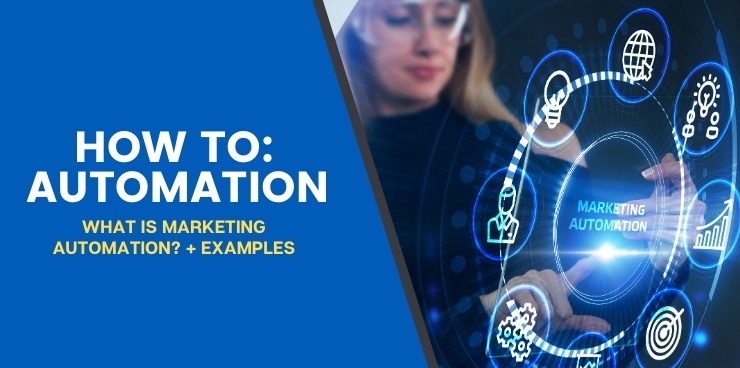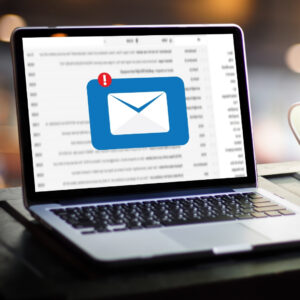Marketing is essential for growing your business. While your sales and operations teams are crucial, marketing drives new growth and development. Without these campaigns, how would new customers find out about your brand?
With so much competition out there these days, it can be overwhelming to try and stay ahead. Fortunately, we live in an age of technology, so marketing automation can make your life easier.
Many companies either don’t know how to use marketing automation or are misusing it. That’s where we come in. This article will outline the basics of marketing automation and how you can use it for your business.
Best of all, we’ll illustrate the benefits of these tools with real-world examples. Here’s what you need to know.
What Exactly is Marketing Automation?
As the name suggests, this process is how you automate various tasks within your marketing campaigns. Rather than having your marketing team do these repetitive actions themselves, they can rely on technology to do it.
There are many different specific actions and tools you can incorporate into your larger marketing automation strategy. However, the most critical aspect is knowing what you need these tools to accomplish. Otherwise, you could have a solution with no problem.
How do You Make Marketing Automation Work?
Many marketing teams want to use various tools but don’t know how to incorporate them. Or, they understand individual automation software but don’t know how it can fit into the broader marketing umbrella.
Here are some tips to make marketing automation work for your business:
Write Down Your Marketing Processes
You are likely already using multiple marketing channels to promote your brand. These channels can include social media, email, SEO and inbound marketing. While each element serves a greater purpose, you have to use different tactics and actions for each one.
So, if you want to use marketing automation, you have to know the various tasks involved with each process. Many companies don’t have these elements written down – opting instead to adapt as they go.
Now is the perfect time to break down each process so that you can understand it better and make improvements.
Identify Problem Areas
Once you have your processes written down, the next step is to figure out where there are bottlenecks and delays. Usually, the most significant issue facing marketing teams is a lack of time. While automation can provide time management solutions, you have to know where these programs will have the best impact.
For example, perhaps you are not curating your email lists, removing bounce-backs and unsubscribers. Managing your lists can be a full-time job if you’re not careful, particularly as you add new leads to them.
Another time sink can be adding details for each new lead. If you’re collecting dozens or hundreds of prospects at a time, your marketers could spend hours inputting that data.
Find Marketing Automation Solutions
You need to have a good idea of what kinds of tools can have the most impact.
If data entry is taking too long, you can use a program that captures information from subscribers and populates those details into your email lists automatically. You can also use software to clean up and manage your lists so that they are always up-to-date.
 How to Use Marketing Automation for Lead Generation
How to Use Marketing Automation for Lead Generation
One of the most valuable tasks for your marketing team is lead generation. Without new leads coming in, your sales reps have fewer deals to close.
Unfortunately, there isn’t a “magic bullet” program that will handle all lead generation for you. Here are some ways that marketing automation can help this process:
- Chatbots – When visitors come to your site or a particular landing page, you can use AI chatbots to engage with them. These bots can capture a lead’s attention. They can ask questions to qualify that lead before handing it off to a live person.
- Auto-Drip Emails – Depending on how many new leads you capture in a given time frame, it’s next to impossible to manage them all. Marketing automation allows you to send emails immediately after a user subscribes to your list. This action ensures that leads don’t disappear or get cold because of a lack of engagement.
- Behavioral Emails – As artificial intelligence becomes more prevalent, businesses are using it in creative ways. Rather than sending the same messages to everyone in a specific list, marketing automation allows you to customize your emails. The system learns your prospect’s preferences and speaks to them directly.
Overall, the most crucial aspect of lead generation is to qualify each individual. Don’t waste time on leads that will never convert to customers.
Instead, let automation help you determine the right time to deliver new content or a sales pitch. From there, you will see a significant increase in your conversion and close rate.
When is the Right Time to Invest in Marketing Automation?
At first, it might seem like marketing automation is valuable no matter what. However, its primary purpose is to save time and streamline your marketing processes. So, if you’re not struggling to keep up with demand, now isn’t the right time to invest in marketing automation.
Instead, it’s better to wait until your team starts falling behind. By waiting until this point, you can be sure that automation won’t free up too much time for your marketers.
Before you reach this stage, however, you should have an excellent idea of which tools can help your team succeed. You will also want to determine which actions your marketers will still handle.
For example, an automated program will send emails at specific times. But, a marketer must generate those messages to make them captivating. Similarly, sharing blog posts automatically can generate interest on social media, but someone has to write each post.
Overall, you want to balance automation with a human touch. This balance is crucial. So, you need to write down each marketing process so you know where programs can fit in efficiently. If you’re making everything up as you go, it’s impossible to tell where automation can work best.
How do I Choose the Best Marketing Automation Solution for My Business?
When comparing different automated programs, it can seem overwhelming, particularly since many of them have the same features. Here are some tips on choosing the right solution for your business:
- Utilize Free Trials – Most software tools allow you to test it before you buy. You will need to have an action plan in place before starting a trial, though. Otherwise, you’ll just waste time without learning anything about the program.
- Avoid Siloes – Some marketing automation services focus on a specific channel. Other software allows you to handle multiple channels from one platform. What you want to avoid is having to set up numerous accounts for each marketer. Siloes can decrease productivity and make your process less efficient.
- Ask About Customer Support – As you implement marketing automation solutions, you will likely experience a learning curve. Be sure to develop strong relationships with your providers so you can get assistance promptly. Otherwise, you may wind up struggling far more than is necessary.
- Consider Short and Long-Term Goals – You need to think fourth-dimensionally when picking a marketing automation program. What helps your team now may not cut it in the future. Fortunately, many of these tools allow for scaling, but not all of them. Also, consider which tasks you may want to automate in the future.
How to Use Marketing Automation Software as a Beginner
There is a bit of a learning curve when using a new marketing tool. Here are the steps to follow to ensure that you can get the most out of your software:
 Step One: Encourage Readers to Opt-In to Your Email List
Step One: Encourage Readers to Opt-In to Your Email List
Marketing automation starts by capturing lead data. Without names and contact details, there is no way for you to engage new prospects. No matter where your leads originate, your primary objective is to get them to opt-in to your email list.
However, merely asking for a name and email address isn’t going to cut it. Instead, try these tips:
- Offer Value – Whether you provide additional information, free downloadable materials or rewards, more people are likely to subscribe if they see value in it.
- Provide Clear Expectations – Users are often hesitant to submit their email addresses if they think they will be spammed later. Be upfront about what you will do with this information, and remind users that they can opt-out at any time.
- Customize Your CTA – A generic call-to-action is not going to get many leads. Instead, create a unique CTA based on the lead generation tactic. For example, if a landing page is about a specific product, the CTA could provide more information about the item.
Step Two: Deliver On Your Opt-In Promise
The best part of marketing automation is that you can see immediate results. Once a lead subscribes to a particular list, the program can send a welcome message. From there, you can automate new messages and responses based on user feedback and activity.
The initial email, however, should deliver on the promise presented in the CTA. For example, if users clicked the button to get a free e-book, include the book as an attachment in the first email. Never make prospects wait for something unless you want to lose them as potential customers.
Step Three: Offer Extra Content to Identify Highly Motivated Subscribers
An initial offer can help you generate new leads. But, you need to find a way to keep them on the hook for future messages and engagements. One of the simplest options is to provide additional content in follow-up emails.
This content can be related to the first piece, or you can try and entice leads with new materials. The primary benefit of offering unique messages is that it allows you to segment your audience further.
Segmentation ensures that the right message goes to the right person at the right time. This is the secret to email marketing. Best of all, marketing automation allows you to do all of this instantly.
Step Four: Give Warm Leads to Your Sales Team
Overall, the goal of marketing automation is to qualify your leads as much as possible. Doing so can help you ensure that your sales team only speaks with individuals who are already interested in buying.
With these tools, you can even use lead scoring to assign points to every action. Once you determine a minimum score for conversion, you can hand off those leads to your sales reps. Then, sit back and watch your bottom line grow.
Step Five: Warm Up Cold Leads and Re-Engage
Unfortunately, even with your best efforts, most of your subscriber lists won’t be ready to buy right away. However, as long as they haven’t unsubscribed from your emails, you can potentially warm them up over time.
Refine your messaging and analyze the ones that work the most. Remember that you can use behavioral tools to target individual leads with captivating content. The more you rely on marketing automation, the easier it is to warm up those cold leads.
Examples of Marketing Automation From Top Companies
Learning how to use marketing automation is much easier when you can see it in action. Here are some real-world examples of brands that have mastered this process:
Kate Spade
Typically, marketers advise companies to be strategic about when to send new emails to subscribers. While there is no official rule, many brands stick to twice a month or so.
Kate Spade, however, emails subscribers daily. Amazingly, users don’t unsubscribe in droves. Instead, the tactic works wonders. The secret is a blend of curated content, exclusive discounts, and plenty of appreciation. If you have enough material to offer, why not send it all the time?
Airbnb
This company stays ahead of the competition with creative marketing tactics. The brand uses behavioral tools to re-capture cold leads.
Rather than sending generic content or deals, Airbnb curates discounts and offers based on user behavior. This method has a much higher engagement rate, which keeps customers coming back for more.
Coursera
This brand is an online platform that offers hundreds of educational courses on many subjects.
Fortunately, since Coursera has so much content available, it’s easy to customize messages to fit user’s specific preferences. This marketing automation is another example of using behavioral data to curate email offers.
Nissan
Car dealerships have a built-in benefit for marketing automation. Since vehicles need regular maintenance, all a dealership has to do is send reminder emails whenever the next service is due.
Not only are these messages valuable for users, but they are easy to set. For example, Nissan can automate bi-annual reminders for oil changes as soon as a customer purchases a car.
Get the Most Out of Marketing Automation With SellingRevolution
Even though automation is designed to make your life easier, it can be tricky to master. At SellingRevolution, we’ll help your marketing and sales teams get the most out of marketing automation tools. Contact us today to get started.


 How to Use Marketing Automation for Lead Generation
How to Use Marketing Automation for Lead Generation
 Step One: Encourage Readers to Opt-In to Your Email List
Step One: Encourage Readers to Opt-In to Your Email List